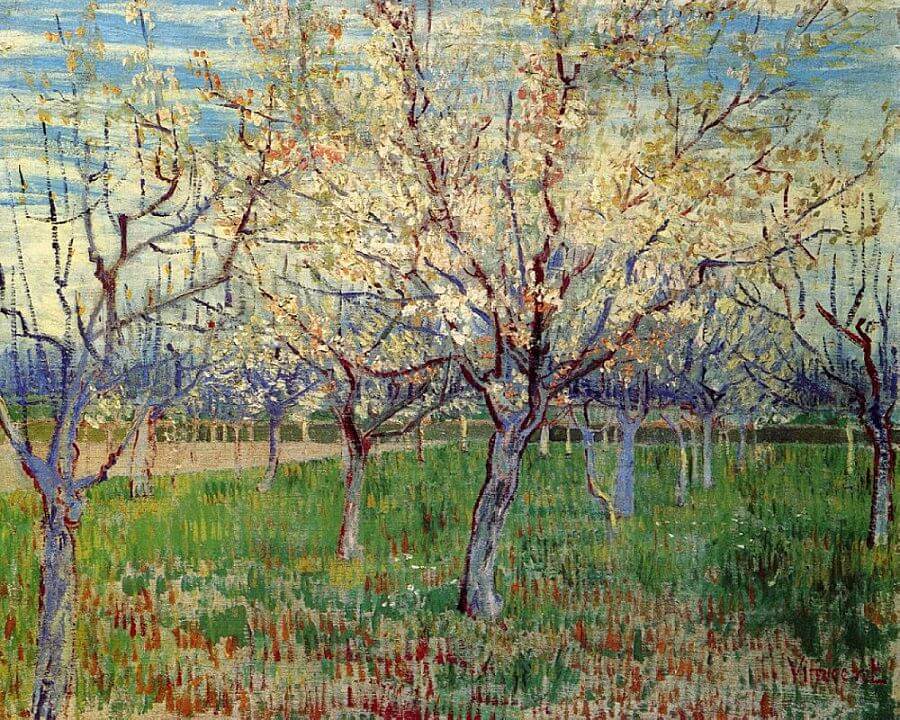The Orchard, 1888 by Vincent vw我·an Gogh

The orchard in blossom, Van Gogh's first welcoming encounter in the South, to which he had come in expectation of a healing, revitalizing nature, was for him an intoxicating vision, and it is this ecstasy that, pervading his work, sets it apart from the familiar Impressionist joy in light and atmospheric color. The trees rise to the sky a broad mass of immaterial whiteness and pinkness - more a floating emanation than a mass - scattered and suspended in a sky of equally varied tones, and playing against the interspersed phantom leafage and nerve-thin branchings, which in places acquire a visionary aspect that recalls both Far Eastern painting and the discreet beauty and tenderness of the distant elements in early Western landscapes. All this intricate upper region of the picture - blossoms, sky, and arboreal network - coalesces into an overpowering pungency and intoxication of the senses in which the observer must lose himself. Without apparent order, an explosion of fragrance radiates and expands, filling its space, like the long horizontal clouds, in vaguely suggested diagonal and vertical directions.
In contrast to the enchanting diffuseness of the upper zone, the lower half of the picture is more solid and stable, with large areas of green and reddish color and the sturdiness of the irregular tree trunks, whose recurrent blue verticals repeat in color and oppose in direction the blue bandings of the sky. But here too is a palpitation of feeling realized in the streaking of color, the reds and the yellows - a streaking which in its deliberate verticality provides a contrast to the upper zone, and yet retains something of the latter's freedom and reverie through the shapeless or unstressed patterning of the areas they form. Uncommitted to the technique of a school, Van Gogh's brushwork ranges from these neatly aligned strokes of red to the thick formless patches that convey in a magical undefinable manner the quality of blossoms in the air.




















